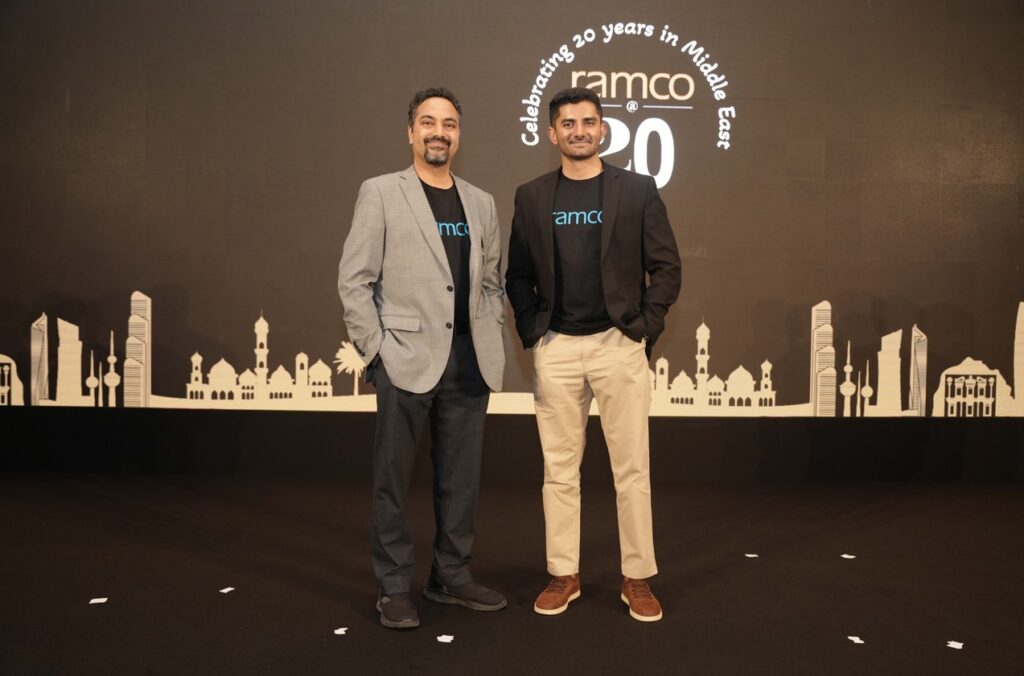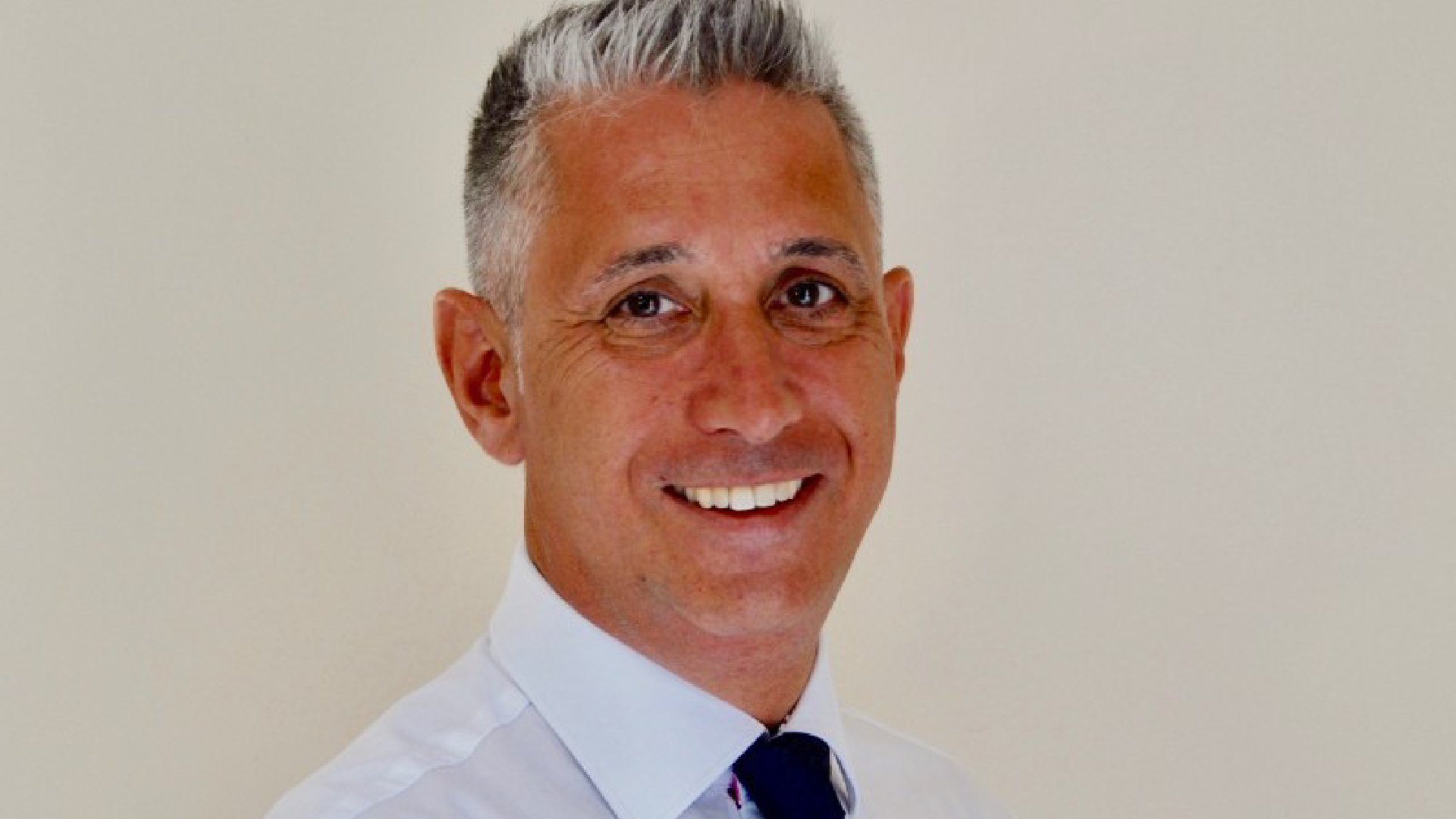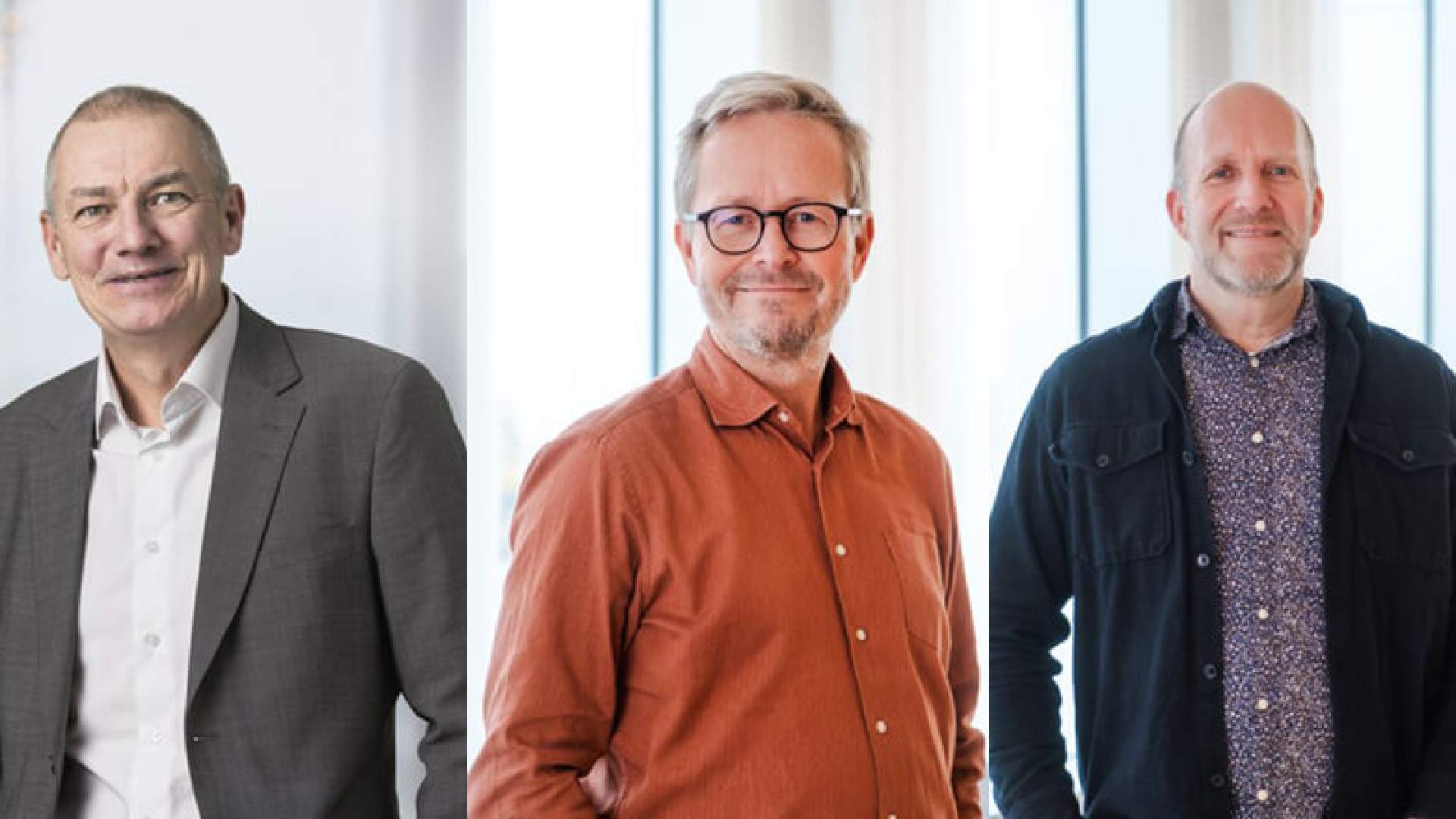Tech Features
The Future of AI and Marketing Collaboration

By Laurent Ross, COO & Co-Owner, Oxygen
It is becoming increasingly clear that AI has become an integral part of marketing operations. Most professionals in our industry are utilising AI tools in some capacity, with varying degrees of sophistication. Through my experience, I’ve observed how teams interact with these tools – sometimes effectively and sometimes in ways that may limit their professional growth.
Some teams have become heavily reliant on AI tools, often bypassing traditional research methods and accepting AI-generated content without sufficient review. There have even been instances where AI-generated work has been presented as a time-intensive human effort, raising important questions about transparency and quality.
Quality Matters More Than Ever
The impact of this shift became particularly evident in December 2024 when Google rolled out what the SEO community dubbed the “Gemini Update” – a significant algorithm change that transformed how AI-generated content is evaluated. Affecting websites globally across all languages, this update aimed to reduce “unhelpful content within search results” by up to 40%, making it clear that Google’s systems had become remarkably adept at distinguishing between valuable AI-assisted content and mass-produced, superficial content.
Websites relying on mass-produced, superficial AI content saw their rankings plummet. However, those who used AI strategically – as a tool to enhance rather than replace human expertise – often maintained or even improved their positions. This update served as an important reminder that while AI can be a powerful tool, it shouldn’t replace thorough research, genuine expertise, and the authentic human perspective that comes from real-world experience.
The Challenge of Content Quality
We’re experiencing an unprecedented volume of content being produced with AI assistance. While AI tools can help create grammatically correct and structured content, there’s a growing need to distinguish between content that merely exists and content that provides real value to audiences.
So I believe that the standard for effective marketing has evolved. Success now requires the skillful integration of various AI tools while maintaining a strong commitment to quality and value creation. This represents both a challenge and an opportunity for marketing professionals to elevate their work.
The Evolution of AI Agents
The landscape continues to evolve with developments like OpenAI’s Operator mode, currently available to Pro subscribers at $200 per month. While early reviews suggest its capabilities are still limited to basic tasks, with occasional challenges in complex scenarios, it represents an important step in the evolution of AI agents.
As we look toward the end of 2025, it’s reasonable to expect more capable AI agents to emerge.
DeepSeek, a new open-source AI model from China, has gained significant attention in the generative AI landscape, particularly among everyday users seeking powerful AI capabilities without subscription costs. While not matching the capabilities of premium models like GPT-4 or Claude, DeepSeek offers notably stronger performance than free alternatives, making advanced AI technology more accessible to the general public.
For businesses, particularly those operating in Asian markets, DeepSeek presents interesting opportunities in content creation, translation and automation. Its potential integration with China’s digital ecosystem, including platforms like WeChat, Douyin and Alibaba, could streamline marketing and customer service operations.
This development highlights an emerging trend in AI: the rise of region-specific models that can better serve local markets while contributing to the global AI ecosystem through open-source collaboration. As the field evolves, the competition between proprietary and open-source models could accelerate innovation and improve accessibility across the industry.
Six strategies for Success in an AI-Enhanced Marketing World
- Use AI as a tool for enhancing critical thinking — rather than replacing it. Consider it a starting point for developing deeper insights and creative approaches.
- Develop proficiency with multiple AI tools, understanding that different tasks may require different solutions.
- Focus on contributing unique value through industry expertise, strategic insight and creative thinking that goes beyond AI capabilities.
- Create workflows that effectively combine AI efficiency with human expertise and oversight.
- Do things AI can’t do; reach out to real humans for new quotes and interview thought-leaders.
- Think outside the box, AI marketing strategies and suggestions are usually very “safe”, and you don’t want your campaigns to blend in.
Looking Forward
The marketing industry is approaching a significant transition period. As AI tools become more sophisticated, the ability to add unique value and strategic insight will become increasingly important. The future of marketing lies not in choosing between human expertise and AI capabilities, but in finding effective ways to combine both.
For marketing professionals, this represents an opportunity to evolve their skills and approach. Success will come from understanding how to leverage AI effectively while maintaining focus on strategic thinking and value creation.
The future of marketing will belong to those who can thoughtfully integrate AI capabilities while preserving the human elements that make marketing truly effective.
Tech Features
The Bold AI Rewrite of Enterprise Software!

By Srijith KN, Senior Editor, Technology Integrator
Celebrating more than two decades in the region—and backed by over 800 enterprise customers—Ramco Systems is not merely expanding; it is doubling down on its presence. With a 50-member local team and a roadmap anchored in deep product localization, the company’s strategy is clear: build for the region, in the region. Local language support, government-portal integrations, and strict alignment with regional data privacy laws form the foundation of Ramco’s next chapter.

At the media roundtable held in Dubai as part of Ramco@20, Integrator had a front-row view into the company’s transformation; one that is not just incremental but architectural. From pioneering client-server systems to shaping modern SaaS platforms, Ramco has long played in the innovation lane. But what they are now setting their sights on could reshape the enterprise software landscape once again: AI-native enterprise systems.
From System of Record to System of Intelligence
Ramco’s next strategic leap is a shift from traditional enterprise software—rigid, transactional, and complex—to a fluid “system of intelligence.” Imagine an enterprise app that doesn’t wait for instructions but proactively surfaces insights, flags anomalies, and allows employees to manage operations through natural conversation. That is the future Ramco is building toward.
One of their strongest verticals—HR and payroll—illustrates this ambition. They already support organizations with massive workforce structures, including companies with over 100,000 employees and more than 1,000 pay components. Under an AI-powered interface, many of these complicated workflows will compress into simple prompts, removing friction from one of the most complex business domains.
A ChatGPT-Like Canvas for Enterprise Work
The company demonstrated an early preview of its conversational interface; a clean, unified canvas where users can query pending purchase requests, generate reports, or even create purchase orders using a single natural language prompt. The UX remains consistent for all, but the underlying workflows, context, and AI-generated outputs adapt to individual users and company-specific processes.
But the most compelling use cases emerged when the discussion shifted to aviation; a sector where Ramco already has deep domain expertise.
AI on the Hangar Floor: A Glimpse into Aviation’s Future
Picture a technician standing beside a massive aircraft engine, disassembling components, identifying faults, replacing parts, and logging every detail meticulously. Aviation is unforgiving—every part must meet airworthiness standards, track flying hours, and comply with stringent regulations. Only certified personnel can work on the engine, and even the tools they use must be OEM-mandated.
Now layer AI into that setting.
As a technician opens an engine and reports an issue—say, a damaged blade—the AI instantly scans 15–20 years of historical maintenance data. It recognizes patterns and alerts the technician:
“John, you’re replacing this blade on an A380. Historically, whenever this part is replaced, another related fault tends to appear within eight months. Would you like to inspect that area as well?”
This is not a textbook recommendation. It is institutional memory—decades of real-world faults and fixes—surfacing as real-time intelligence. The system becomes a second expert on the floor, conversing with technicians, guiding actions, and ensuring nothing slips through the cracks. This simple conversational canvas, Ramco argues, has the potential to reshape ground-level operations in one of the world’s most complex industries.
The Critical Question: What About Data Privacy?
As enterprise AI evolves, the most pressing concerns are no longer about innovation; they’re about protection. So, we asked the question that matters most: How does Ramco secure customer data in an AI-driven future?
Their answer was reassuringly clear:
- All AI workloads are hosted locally within the customer’s private environment.
- Data never leaves the region. Workloads are deployed in the customer’s local data center.
- Every customer gets an isolated AI instance. No shared environments, no cross-pollination of data.
- No external web calls, ensuring full containment and compliance.
In an era where enterprises fear the opacity of AI, Ramco is betting on transparency and regional sovereignty.
The Road Ahead
Ramco’s mission is ambitious: to redefine enterprise apps through AI and shift the industry from systems that store data to systems that think. And based on what we witnessed at Ramco@20, this is not a distant vision; it is already taking shape on factory floors, in payroll departments, and inside aircraft hangars.
The next era of enterprise software won’t just automate processes. It will understand them. And Ramco is positioning itself to become one of the first global players to make that leap—from record-keeping to intelligence-building—right here in the region.
About Ramco Systems
Ramco Systems is a world-class enterprise software product/platform provider disrupting the market with its multi-tenant cloud and mobile-based enterprise software, successfully driving innovation for over 25 years. Over the years, Ramco has maintained a consistent track record of serving 800+ customers globally with 2 million+ users and delivering tangible business value in global payroll, aviation aerospace & defense, and ERP. Ramco’s key differentiator is its innovative approach to develop products through its revolutionary enterprise application assembly and delivery platform. On the innovation front, Ramco is leveraging cutting-edge technologies around artificial intelligence, machine learning, RPA, and blockchain, amongst others, to help organizations embrace digital transformation.
Tech Features
HOW GCC OPERATORS CAN LEAD THE NEXT AI WAVE WITH FUTURE-PROOF OPTICAL NETWORKS

By Pete Hall, Regional Managing Director, Ciena Middle East & Africa
Artificial Intelligence (AI) is advancing at a rapid pace in the region, driving innovation across various industries. The GCC now stands at a pivotal moment, with AI transitioning from a hyperscaler-centric phenomenon to a ubiquitous force shaping enterprise and consumer networks alike.
Globally, Amazon Web Services (AWS), Google Cloud, Microsoft Azure and NVIDIA have stepped in to manage large-scale computing and data processing needs. Unlike traditional data centers, they are built to meet evolving workloads without major infrastructure changes.
The rapid expansion of data centres to meet soaring demand is also evident in the UAE, where du announced a deal with Microsoft to set up a data centre in the country to revolutionize the digital ecosystem. Next door, Saudi Arabia has been expanding its investments in data centres to drive its wider ambitions to become a regional AI leader and global tech hub.
While much of the AI optics boom has so far been confined to data center interconnects, growth is now shifting from AI model training to AI inferencing, where AI models can make accurate predictions based on new data. However, it takes data-intensive AI training to make this a reality.
As new AI applications such as AI-powered analytics, immersive media, and automation are expected to surge through 2030, the next wave will demand robust, low-latency, high-capacity optical transport across metro and long-haul networks.
In particular, GCC markets are primed to experience rapid uptake due to national AI agendas and smart city initiatives. A 2025 survey shows AI traffic could account for 30–50% of metro and long-haul capacity within three years. It is interesting to note that enterprises, not hyperscalers, are expected to drive the most network traffic growth over this period.
As the AI traffic boom moves beyond the data centre, low latency, high capacity, and resilient optical links will be the key differentiators for AI-driven workloads. This is precisely where regional telcos can take the lead. The market for capacity is already evolving quite rapidly.
Earlier this year, e& UAE became the first in the Middle East and Africa to deploy Ciena’s WaveLogic 6 Extreme, achieving ultra-high-speed 1.6 Tb/s per wavelength connectivity. This advancement supports 10 Gb home services and wholesale and domestic business customer traffic with 100G and 400G requirement.
The GCC’s investment in high-capacity optical networks, powered by new innovations such as WaveLogic 6, provides a competitive advantage in meeting the increasing AI traffic demands. If they are to take this to the next level, GCC telcos must capitalize on their relatively greenfield networks to deploy future-proof optical infrastructures faster than more mature markets constrained by legacy systems.
GCC operators are charting a new course as AI enablers, leveraging managed optical fiber networks and AI-optimized SLAs to deliver greater value and innovation beyond traditional bandwidth services.
To accelerate this journey and speed time to market, operators are also taking steps to address capex constraints, skill gaps, and organizational alignment. By positioning themselves as AI ecosystem leaders, they can unlock long-term revenue and resilience.
There is a real window of opportunity for GCC operators to capitalise on the AI optical wave. Thanks to national AI strategies, sovereign cloud initiatives, and hyperscaler partnerships, they already have a head start. By continuing to invest in future-proof, high-capacity, low-latency optical networks they can ensure network readiness for AI’s exponential traffic growth. The next three years will determine whether GCC operators shape the AI economy or chase it.
Tech Features
5 KEY TECHNOLOGY TRENDS AFFECTING THE SECURITY SECTOR IN 2026

By Johan Paulsson, Chief Technology Officer at Axis Communications; Matt Thulin, Director of AI & Analytics Solutions at Axis Communications; and Thomas Ekdahl, Engineering Manager – Technologies at Axis Communications
It came as a surprise that this is the 10th time that we’ve looked at the technology trends that we think will affect the security sector in the coming year. It feels like only yesterday that we sat down to write the first – a reminder of how quickly time passes, and how fast technological progress continues to move.
Something that’s also become clear is that a completely new set of trends doesn’t appear year-on-year. Rather, we see an evolution of trends and technological developments, and that’s very much the case as we look towards 2026. Technological innovations regularly arrive, which impact our sector. Artificial intelligence, advancements in imaging, greater processing capabilities within devices, enhanced communications technologies…these and more have impacted our industry.
Even technologies which still seem a distance away, such as quantum computing, may have some potential implications in the near-term in preparing for the future. While we focus here on tech trends, it’s worth highlighting a shift that we’ve seen in recent years: the increasing involvement and influence of the IT department over decisions related to security and safety technology. The physical security and IT departments now work in close collaboration, with IT heavily involved in physical security purchasing decisions.
That influence, we feel, is central to the first of our trends for 2026…
1. “Ecosystem-first” becomes an important part of decision making
At a fundamental level, the greater influence of the IT department is changing the perspective regarding security technology purchasing decisions. We call this an “ecosystem-first” approach, and it influences almost every subsequent decision. Today, however, we start to see a trend that the first decision is increasingly defined by the solution ecosystem to which the customer wants to commit. In many ways, it’s analogous to how IT has always worked: decide on an operating system, and then select compatible hardware and software.
The ecosystem-first approach makes a lot of sense. With today’s solutions including a greater variety of devices, sensors, and analytics than ever before, seamless integration, configuration, management, and scalability is essential. In addition, product lifecycle management, including, critically, ongoing software support, becomes more achievable within a single ecosystem.
Committing to a single ecosystem – one offering breadth and depth in hardware and software from both the principal vendor alongside a vibrant ecosystem of partners – is the primary decision.
2. The ongoing evolution of hybrid architectures
A hybrid architecture as the preferred choice isn’t new. In fact, it’s something we’ve highlighted in previous technology trends posts. But it continues to evolve. Sometimes evolution can seem quite subtle. In reality, we’re seeing some fundamental shifts.
We’ve always described hybrid as a mix of edge computing within cameras, cloud resources, and on-premise servers. While that’s still the same today, what’s changing is the balance of resources, as capabilities are enhanced and new use cases emerge. Edge and cloud are becoming much more significant, with the need for on-premise server computing resources reduced.
This is largely a result of enhanced computing power and capabilities within both cameras and the cloud. More powerful edge AI-enabled surveillance cameras can, put simply, handle more than ever before. Improved image quality, the ability to more accurately analyze scenes and create valuable metadata have seen cameras take on tasks previously handled on the server.
Similarly, with such a wealth of data being created, cloud-based resources have the analytical power required to surface business intelligence and insights to enhance operational effectiveness.
There can still be legitimate reasons to retain some on-premise resources, such as network video recorders, but the true value is increasingly coming from edge devices and cloud resources. Ultimately, it’s a trend that meets both the IT department’s drive for efficiency, the security team’s desire for solution quality and effectiveness, and the data integrity and security needs of both.
But, even if hybrid architectures are a trend, we must not forget that a vast majority of all solutions are still very much on-prem solutions, and this will be the case for a long time.
3. The increased importance of edge computing
In many sectors, like the automotive industry, the need and potential for edge computing has only been recognized relatively recently. As regular readers will know, however, the value of increased computing resources within devices at the edge of the network has been a feature of our technology trends predictions for several years. Enhanced capabilities mark the beginning of a new era of edge.
In many ways, the increased importance of edge computing is directly related to the evolution of hybrid architectures described in the previous trend. When hybrid solutions have included edge, cloud, and server technologies, the full potential of edge AI hasn’t always been fully realized. With on-premise servers able to support some tasks, there has been less motivation to move these to the edge.
This is already changing and will accelerate over the coming year. This is in part due to the enhanced AI available to the edge, within devices themselves. The discussion and decisions about where to deploy AI across surveillance solutions – using the strengths of edge AI in devices and the power of cloud-based analytics – has brought focus to the capabilities of cameras and the increasing variety of edge AI-enabled sensors. These bring benefits in both effectiveness and efficiency.
Edge processing generates both business data — actionable insights derived directly from the scene — and metadata, which describes the objects and scenes within it. This information has become the basis for efficient scaling of system functionality, such as smart video searches, and for generating system wide insights. Edge processing enables a much smoother scaling of system compute performance, as the system performance grows with each added edge device.
The arguments against moving more to the edge, such as cybersecurity challenges, have diminished. With the strong cybersecurity capabilities of edge devices, such as secure boot and signed OS, they now have become a strong part of the overall system security solution.
4. Mobile surveillance on the rise
Mobile surveillance solutions, like mobile trailers, aren’t a trend in themselves. For numerous reasons – commercial and technological – mobile surveillance has already seen significant growth and is set to explode over the next year.
From a technological perspective, improved connectivity has helped unlock the ability to employ more advanced, higher-quality surveillance cameras in mobile solutions. Remote access and edge AI has further enhanced the capabilities of mobile surveillance solutions. This immediately makes them an attractive option in a greater variety of situations, from public safety to construction sites to festivals and sporting events.
Power management within surveillance cameras has also advanced, resulting in lower power utilization without a compromise in quality. This is particularly important where mobile surveillance solutions are making use of battery power and renewable energy. A mobile surveillance solution can also be more straightforward to approve than a permanent installation.
Ultimately, these factors mean that security and safety can be ensured in places where it is difficult or undesirable to place physical security personnel.
5. Technology autonomy: Easier said than done!
Less a new trend, and more a reflection on one of our trends from last year where we highlighted how companies across many sectors were looking to gain more control over key technologies essential to their products. Automotive companies looking to design their own semiconductors to mitigate against supply chain disruption was an example.
As many of those organizations are finding, however, extending an organization’s focus from its traditional business (e.g. making cars) to a fundamentally different and potentially highly complex area (e.g. designing semiconductors) is easier said than done. Attempts also highlight how interconnected global supply chains are, and that true autonomy is impossible to achieve.
As we have done for many years here at Axis, focus for technological autonomy should be on the areas of a business that make a fundamental difference to the offering. Designing our own system-on-chip (SoC), ARTPEC, which Axis started doing more than 25 years ago, has given us ultimate control over our product functionality.
An example of the benefit of this has been our ability to be the first surveillance equipment vendor to provide AV1 video encoding to our customers and partners, in addition to H.264 and H.265. It also allows us to prepare for future technologies that will bring opportunities and risks, even those that still seem many years in the future.
While we always enjoy putting together our thoughts on the trends that will define the industry over the coming year, our perspective stretches much further into the future. This is what gives us the ability to plan for and develop the innovations that continue to meet the evolving needs of customers, and opportunities to improve safety, security, operational efficiency and business intelligence.
Innovation doesn’t happen in isolation, however. The best ideas emerge through collaboration, by listening to our customers and understanding their challenges, by maintaining close relationships with our partners, and by exploring solutions together. These partnerships are what will continue to drive progress as we move into 2026 and beyond, whichever way the technological winds may blow.
-

 Tech News1 year ago
Tech News1 year agoDenodo Bolsters Executive Team by Hiring Christophe Culine as its Chief Revenue Officer
-

 VAR8 months ago
VAR8 months agoMicrosoft Launches New Surface Copilot+ PCs for Business
-

 Tech Interviews2 years ago
Tech Interviews2 years agoNavigating the Cybersecurity Landscape in Hybrid Work Environments
-

 Tech News5 months ago
Tech News5 months agoNothing Launches flagship Nothing Phone (3) and Headphone (1) in theme with the Iconic Museum of the Future in Dubai
-

 Tech News2 years ago
Tech News2 years agoBrighton College Abu Dhabi and Brighton College Al Ain Donate 954 IT Devices in Support of ‘Donate Your Own Device’ Campaign
-

 VAR1 year ago
VAR1 year agoSamsung Galaxy Z Fold6 vs Google Pixel 9 Pro Fold: Clash Of The Folding Phenoms
-

 Editorial1 year ago
Editorial1 year agoCelebrating UAE National Day: A Legacy of Leadership and Technological Innovation
-

 Cover Story10 months ago
Cover Story10 months agoUnifonic Leading the Future of AI-Driven Customer Engagement

























